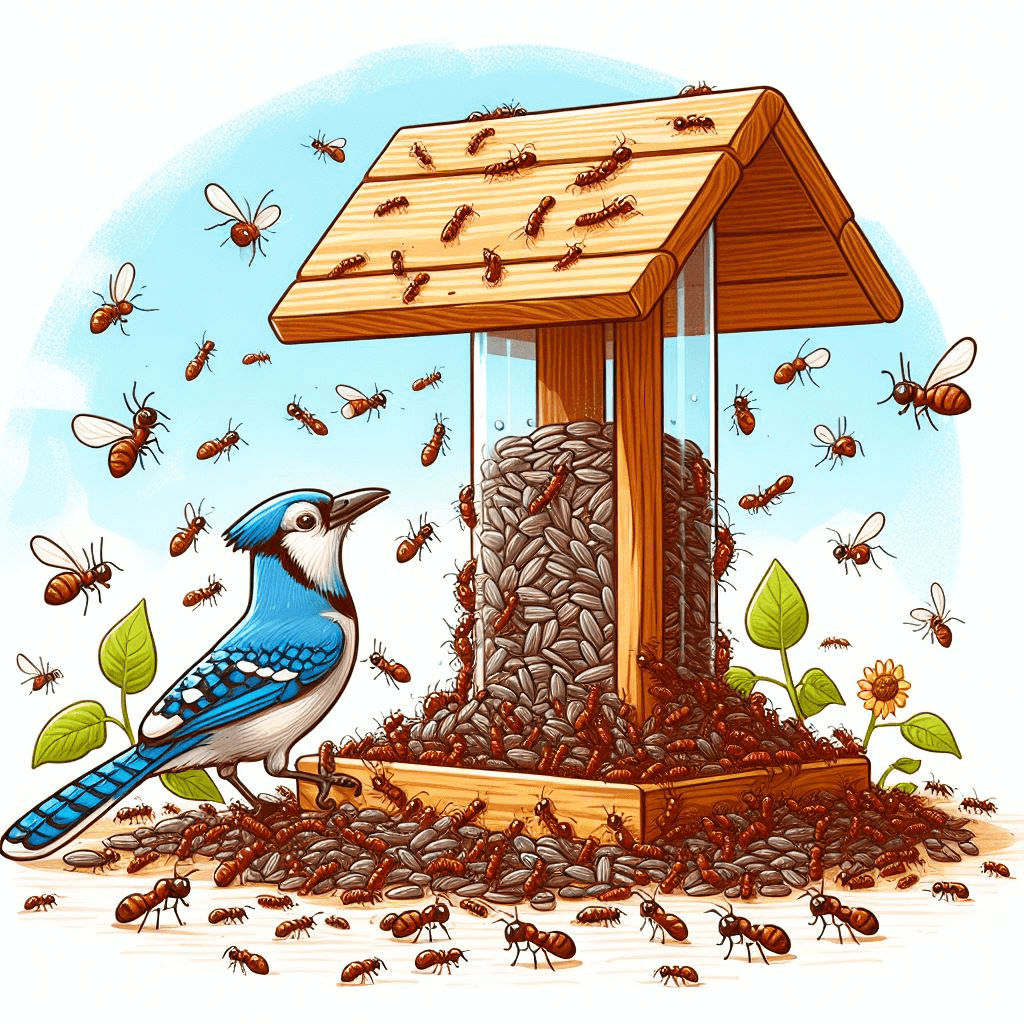Hummingbirds are fascinating creatures, known for their vibrant colors and remarkable agility. These tiny birds bring joy and beauty to our lives as they flutter around our gardens.
To attract these delightful visitors to our yards, many of us put up hummingbird feeders filled with sweet nectar. However, there is one unwanted guest that often accompanies the hummingbirds: ants.
The presence of ants around hummingbird feeders may seem like a minor annoyance, but it can actually have a detrimental impact on both the birds and their food source. Ants are not only persistent in their pursuit of food, but they can also contaminate the nectar with their bodies or waste, making it unappealing or even harmful to hummingbirds.
The Importance of Keeping Ants Away

The primary reason for keeping ants away from hummingbird feeders is to ensure the well-being of these delicate birds. Hummingbirds rely heavily on the nectar provided by feeders as a source of energy and sustenance.
When ants invade the feeders, they create an unappetizing environment that may deter hummers from feeding altogether. In addition to deterring feeding activity, ants can indirectly harm hummingbirds by depleting or spoiling the nectar supply.
As tiny as they are, ants have impressive appetites and can quickly consume significant quantities of nectar intended for hummingbirds. This diminishes the available food source and may leave hummers without adequate nourishment.
Furthermore, when ants crawl over or defecate in the feeder’s nectar ports or wells, they introduce bacteria that could be harmful to both birds and humans alike. This contamination poses health risks for hummingbirds and could potentially lead to digestive problems or even infections.
Understanding Ant Behavior
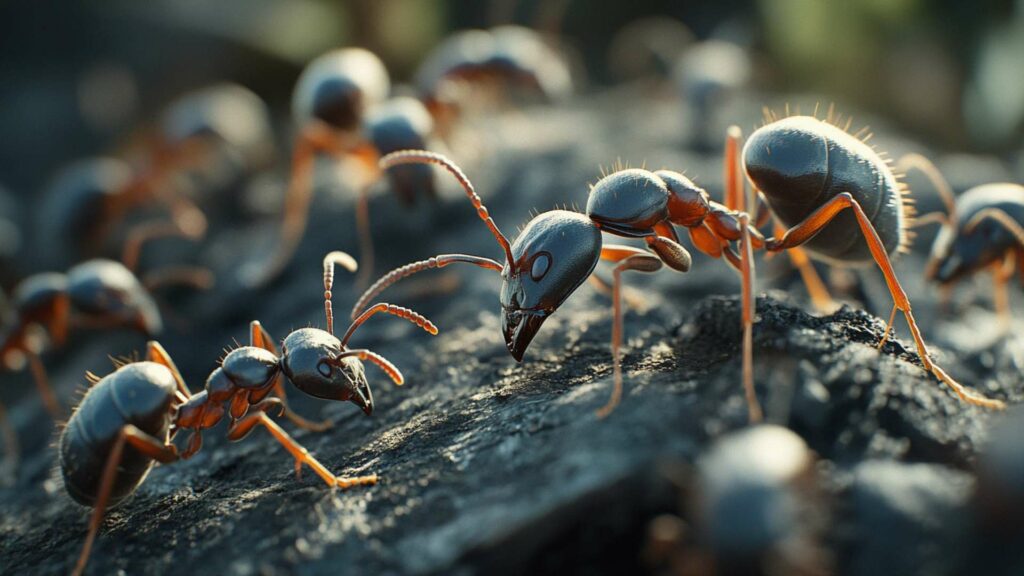
Why ants are attracted to hummingbird feeders
Ants can be quite persistent when it comes to finding food, especially when it’s something as delicious as hummingbird nectar. These tiny creatures have a remarkable sense of smell that allows them to detect the sweet nectar from a considerable distance away.
Once they locate a feeder, they will do everything in their power to get to the source of this sugary goodness. The attraction between ants and hummingbird feeders lies in the abundance of carbohydrates present in the nectar.
Ants are naturally drawn to any food that is rich in sugars, as it provides them with an instant energy boost. Additionally, ants are opportunistic foragers and will exploit any available food source they come across, including your beloved hummingbird feeders.
How ants communicate and form trails to food sources

Ants are highly social insects that rely on intricate communication systems within their colonies. When an ant discovers a promising food source, it leaves behind a trail of pheromones—a chemical substance that acts as a signal—to guide its fellow nestmates towards the treasure trove.
This pheromone trail is like a navigational map for other ants in search of food. As more members of the colony follow the scent left by the initial scout ant, the trail becomes stronger and more enticing for others to join.
This results in an ever-increasing stream of ants marching towards your precious hummingbird feeder. Once established, these trails can be challenging to disrupt without implementing proper ant control methods.
The constant flow of scout ants recruiting reinforcements ensures steady access for the entire colony until you intervene and take preventive measures against these persistent little intruders. Understanding why ants find hummingbird feeders attractive and how they communicate with each other is crucial if you want to effectively keep them at bay.
By comprehending their behavior, you can develop strategies to outsmart them and keep your feeders ant-free. In the following sections, we will explore various ways to prevent ants from invading your hummingbird haven.
Physical Barrier
Using Moats or Ant Guards
When it comes to keeping ants away from your beloved hummingbird feeder, physical barriers can be an effective first line of defense. Two popular options are using moats or ant guards. These barriers create a literal roadblock for those pesky ants, preventing them from reaching the feeder and ruining the hummingbirds’ delightful dining experience.
Ant moats are small devices that you hang above your feeder, usually in the form of a small cup filled with water. The concept of using an ant moat is quite simple: ants can’t swim!
By creating a body of water between the feeder and ants, you’re effectively cutting off their access route. As they move the feeder and come into contact with the moat filled with water, they’ll realize their journey has come to an abrupt end, and they’ll have no choice but to retreat.
Now, let’s talk about ant guards. These handy little contraptions act as physical barriers that deter ants from crawling down to the nectar-filled feeding ports of your hummingbird feeder.
Ant guards typically consist of a small plastic or metal cup-like structure attached to a hook or hanger that you hang above your feeder. The guard is coated with a sticky substance on which ants get trapped if they attempt to pass through.
Effective Moat Selection and Installation Tips
To make sure your chosen ant moat does its job effectively, here are some tips for selecting and installing one:
1. Size Matters: Ensure that the size of the moat fits well with your existing hummingbird feeder setup. Consider both its capacity to hold enough water and its compatibility with hanging systems.
2. High-Quality Materials: Invest in a durable moat made from high-quality materials such as sturdy plastic or metal that won’t degrade easily over time.
3. Easy Maintenance: Opt for moats that are easy to clean and refill. Regular cleaning is essential to prevent the water from becoming stagnant or contaminated.
4. Proper Placement: Hang the moat approximately 12-18 inches above your hummingbird feeder, ensuring kill ants have a clear path between the moat and the feeder. This will create an effective barrier that ants will struggle to overcome.
By selecting an appropriate ant moat or using an ant guard, you’ll be well on your way to protecting your precious hummingbird feeder from ant intruders. With these physical barriers in place, you can rest assured that no army of ants will disrupt the peaceful feeding sessions of these delightful birds.
Natural Repellents
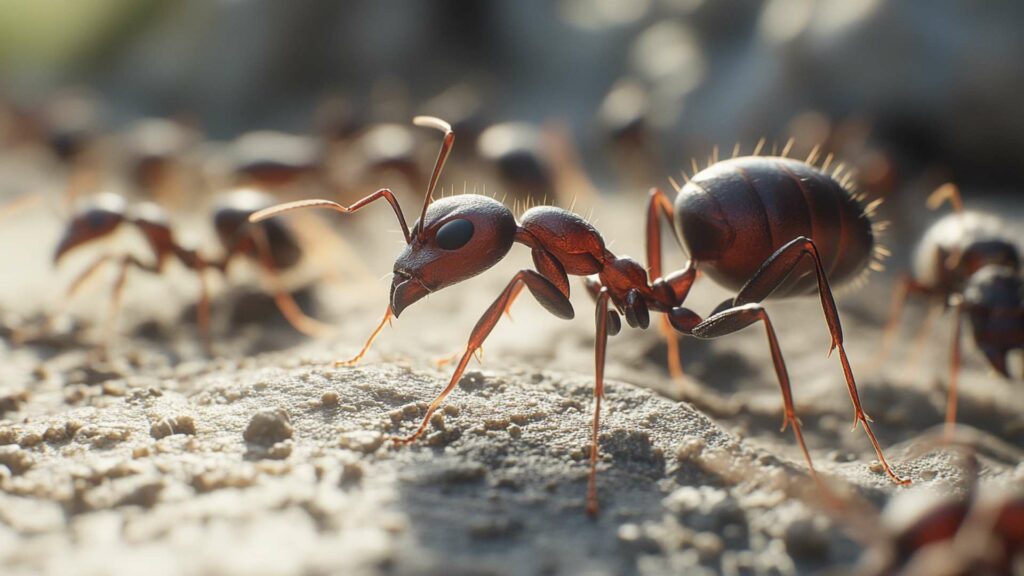
Introduce natural substances that repel ants without harming hummingbirds or their environment
When it comes to keeping those pesky ants away from your hummingbird feeders, there are several natural repellents you can use that won’t harm the birds or the environment. These substances work by disrupting the ant’s scent trails, making your feeder less attractive and deterring them from invading. One effective natural repellent is cinnamon.
Ants dislike the strong scent of cinnamon and avoid crossing paths with it. Simply sprinkle some ground cinnamon around the base of your feeder or create a barrier using a cinnamon stick.
Not only will vegetable oil help keep ants at bay, but it will also add a pleasant aroma to your garden. Another option is peppermint oil, which has been proven to repel ants and many other insects.
Mix a few drops of peppermint oil with water in a spray bottle and spritz it around the feeder area. The refreshing scent of peppermint will help deter those persistent little intruders.
Suggest using cinnamon, peppermint oil, or citrus peels as deterrents

Citrus peels are another excellent natural deterrent for keeping ants away. Save those orange or lemon peels after enjoying a refreshing citrus snack! Place them strategically around your hummingbird feeder to create an invisible barrier that ants won’t dare cross.
Not only will this repel ants, but it may also add a touch of vibrant color to your hanging hummingbird feeding station. The secret behind these natural repellents lies in their potent scents that overpower ant pheromones and disrupt their scent trails leading to the sweet nectar of your hummingbird feeder.
By confusing their navigation system, you greatly reduce the chances of an ant invasion. Remember, it’s important not to place these repellents directly on the feeder itself or anywhere near where hummingbirds access their food.
While natural insect repellent is safe for humans and birds, these substances may alter the taste or fragrance of the nectar, which could deter hummingbirds from visiting. Therefore, it’s best to keep the repellents in the vicinity of the feeder but away from direct contact with it.
Overall, using natural repellents like cinnamon, peppermint oil, or citrus peels can be an effective and environmentally friendly way to deter ants from invading your hummingbird feeders. These methods provide a simple yet powerful solution that disrupts ant scent trails while keeping your beloved feathered visitors happy and well-nourished.
So whip out those spices or citrus peels and create a protective barrier around your feeder – ants won’t stand a chance! Note: It’s always a good idea to monitor your feeder regularly for any signs of ant activity and adjust your repellent strategies as needed to ensure maximum effectiveness in keeping those sneaky ants at bay.
Proper Feeder Placement
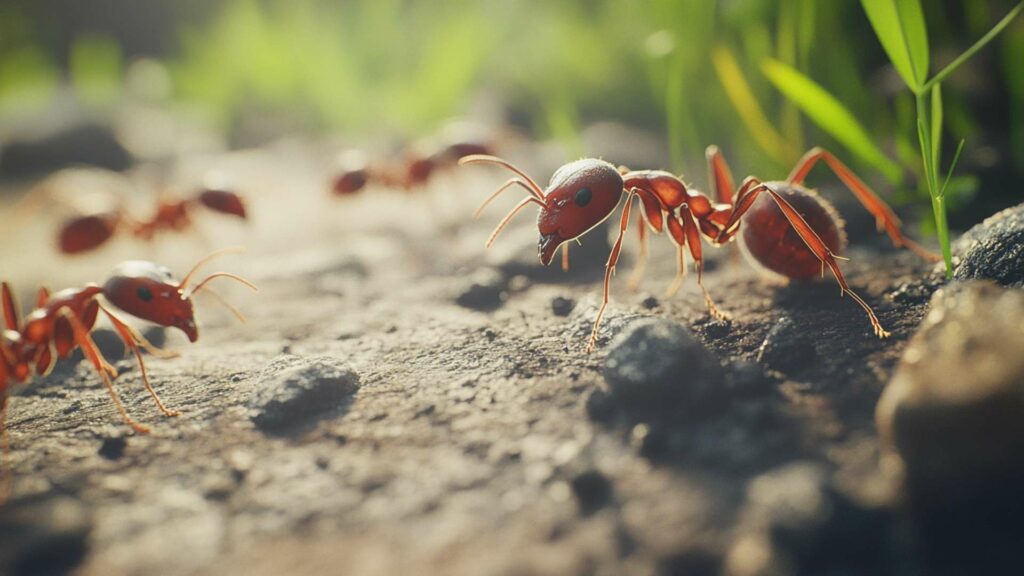
An Ant-Free Zone: Hanging Strategically
When it comes to ensuring your hummingbird feeders remain free from pesky ants, proper feeder placement is key. By strategically hanging your various bird feeders together, you can create an ant-free zone that keeps those little critters at bay.
The first step is to identify areas away from trees or structures that could serve as bridges for ants. These crafty insects are excellent climbers, and they will eagerly use any opportunities to access the sweet nectar in the feeder.
To prevent ants from reaching the feeders, consider hanging them on poles equipped with barriers such as sticky tape or petroleum jelly. These thin and slippery substances act as formidable deterrents for ants.
As ants attempt to climb the pole, they will encounter these barriers and be unable to reach their desired destination. Not only does this method effectively stop ants in their tiny tracks, but it’s also a cost-effective and environmentally friendly solution.
Ant Moats: A Brilliant Defense Mechanism
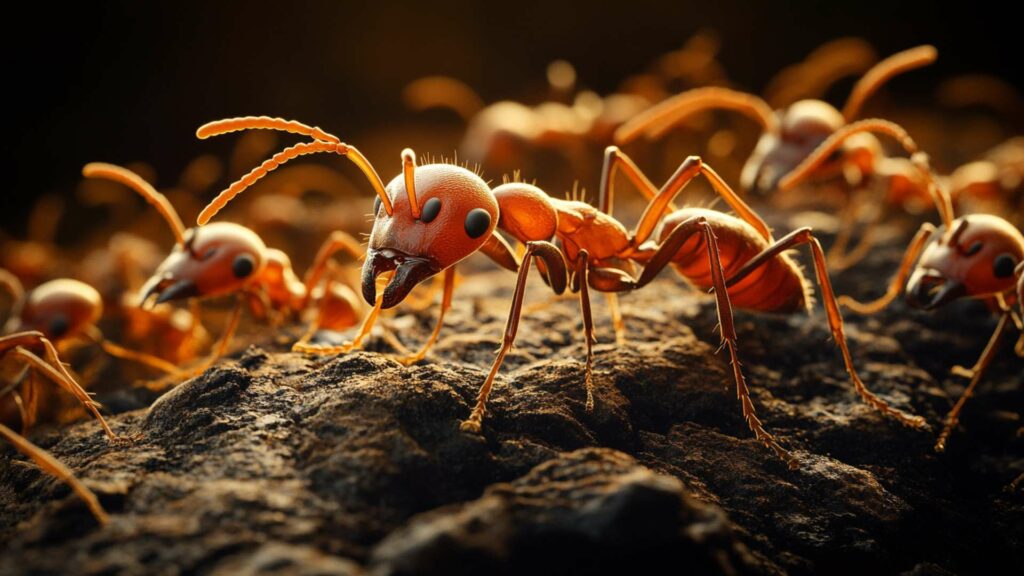
Another effective technique for deterring ants is by utilizing ant moats – built-in or DIY versions – which act as a physical barrier between the ants and your hummingbird feeders. A built-in ant moat is essentially a small reservoir filled with water that creates an impassable obstacle for crawling insects.
To install an ant moat, simply hang it above the feeder on the same hook or fishing line used. The water-filled moat effectively denies access to any unwanted intruders.
For those who prefer a do-it-yourself approach, creating your own simple ant moat is easy! All you need built-in ant moat is a small container like a bottle cap or shallow dish attached to the hanger of the feeder.
Fill it with water and ensure that it stays filled so that its effectiveness remains intact. Remember that placing an ant moat above your feeder serves as an additional layer of protection, preventing ants from reaching the nectar and disrupting your hummingbirds’ dining experience.
Sprinkle Cinnamon: A Spice that Deters Ants

If you’re looking for a natural and aromatic solution to deter ants, consider sprinkling cinnamon around the base of your feeder. Not only does cinnamon add a pleasant scent to your outdoor space, but it also acts as a natural ant repellent.
The strong aroma disrupts the ants’ scent trails, effectively deterring them from approaching the feeder. To apply cinnamon as an ant deterrent, simply sprinkle a small amount around the area where you hang the feeder.
Be sure to reapply after rain or if you notice ants making their way back. This method is safe for hummingbirds and won’t affect their enjoyment of the sweet nectar.
By strategically placing your feeders away from potential ant bridges, utilizing ant moats, and employing natural deterrents like cinnamon, you can create an environment that keeps those persistent little insects at bay. With these simple steps in place, your hummingbird feeders will be an enjoyable oasis for these delicate creatures while keeping unwanted intruders at bay.
Happy birdwatching! Stay tuned for section 6/7: Regular Cleaning and Maintenance!
Regular Cleaning and Maintenance
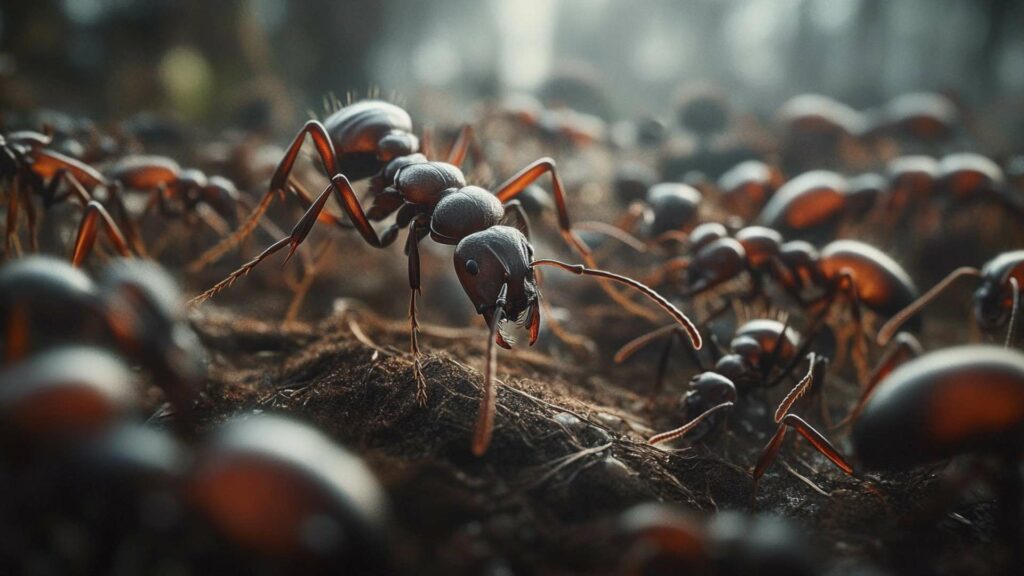
Stress the importance of regularly cleaning hummingbird feeders to discourage ant infestation
To keep those pesky ants away from your hummingbird feeders, regular cleaning is paramount. Not only does it ensure a safe and healthy environment for our adorable feathered friends, but it also helps deter those determined ants from invading the sweet nectar oasis.
Step-by-step instructions for proper cleaning techniques

Cleaning your hummingbird feeder doesn’t have to be a daunting task. Here’s a simple step-by-step guide to help you get started:
1. Disassemble the feeder: Begin by carefully taking apart all the components of your feeder. This usually includes removing the reservoir, base, perches, and any other detachable parts.
2. Rinse with warm water: Thoroughly rinse each part with warm water to remove any remaining nectar or residue. Avoid using harsh chemicals or soap at this stage as they can potentially harm the hummingbirds.
3. Soak in a mild solution: Fill a basin or sink with a mixture of warm water and dish soap (preferably mild and unscented). Place all disassembled parts into the soapy solution and let them soak for about 15-20 minutes. This will help dissolve any stubborn dirt or mold.
4. Scrub gently: Using a soft brush or sponge, scrub each part of the feeder carefully yet thoroughly, paying extra attention to hard-to-reach areas like feeding ports or nooks where insects might hide.
5. Rinse again: Once you’re satisfied with the scrubbing process, rinse each component under running water until all traces of soap are gone.
6. Dry completely before reassembly: Place all cleaned parts on a clean towel or drying rack to air dry completely before putting them back together. Moisture can lead to mold growth, so ensure everything is bone dry.
Highlight the significance of removing any spilled nectar promptly
While cleaning your hummingbird feeder, don’t forget to address any spilled nectar. Even a small sticky residue left behind can signal ants to come flocking in no time.
Promptly wipe off any spills or drips on the feeder itself and its surrounding area. Remember, prevention is key!
Regularly cleaning your feeder and removing any traces of spilled nectar not only discourages ants but also maintains a hygienic environment for the hummingbirds. By following these simple steps, you’ll be providing a safe and inviting space for these charming creatures to enjoy their sweet treats while keeping those persistent ants at bay.
Advanced Techniques for Ant Control
Diving Deeper into Ant Control
Now that we have explored the basic techniques to deter ants from invading your hummingbird feeders, let’s dive deeper into some advanced methods that can tackle persistent ant problems. These techniques go beyond physical barriers and natural repellents that attract ants, offering alternative solutions for keeping those pesky ants at bay.
Commercial Ant Baits or Traps: An Effective Arsenal
When dealing with an ant problem or a relentless ant colony, it may be time to bring out the big guns – commercial ant baits or traps. These products are designed to lure ants with irresistible bait while simultaneously eliminating them. Look for ant baits specifically labeled for outdoor use and follow the instructions carefully.
Place them near the feeder but away from where hummingbirds can reach. One popular option is gel-based baits that contain insecticide within an attractant formula.
As ants consume the gel, they unknowingly carry traces back to their nest, effectively eliminating the entire colony over time. Another choice is liquid bait stations that allow ants to enter and consume a liquid insecticide mixture before returning it to their nest.
A Word of Caution on Commercial Products
While commercial ant baits or traps can be highly effective in controlling ants around your hummingbird feeders, always prioritize the safety of both birds and pets. Make sure these products are placed strategically out of reach of hummingbirds and other non-target animals such as squirrels or cats.
As with any insecticide, read and follow all label directions closely, ensuring you adhere to proper usage instructions. If you have concerns about using chemicals in your yard, consider seeking eco-friendly alternatives such as baits made with boric acid or diatomaceous earth.
A Hummingbird Oasis Free of Ants!
With these advanced techniques in your ant-fighting arsenal, you can confidently create a hummingbird oasis free from those pesky ants. By combining physical barriers, natural repellents, and commercial ant baits or traps, you’ll have a multi-layered defense system that keeps ants at bay while ensuring the safety of our beloved hummingbirds. Remember to regularly clean your feeders, maintain proper feeder placement away from potential bridges for ants, and stay vigilant in monitoring and addressing any signs of ant activity.
By taking proactive steps and exploring the best ways to keep ants out of hummingbird feeders, you can enjoy the delightful presence of these tiny avian wonders without their uninvited six-legged visitors. So why wait?
Put these strategies into action and make your hummingbird feeder a haven exclusively for these delightful creatures. Happy birdwatching!
Dissuade Ants with D-Termination: Las Vegas’ Leading Pest Control Service!

If you’re dealing with ant troubles, D-Termination is ready to help. Our expert team specializes in deterring ants, revitalizing cleanliness, and preserving the integrity of your space. Bid farewell to ants—opt for D-Termination for effective pest control today!
Reach out to us at 702-919-6310 or visit dtermination.com to schedule your ant control service and regain your space from these unwanted pests.
Frequently Asked Questions:
A common solution to deter ants while not affecting hummingbirds is using ant moats or traps.
You can utilize ant moats, water barriers, or ant traps to keep ants away from a hummingbird feeder.
Vaseline can be applied as a barrier to prevent ants from reaching the feeder.
Ants at a hummingbird feeder generally won’t harm hummingbirds, but they can be an annoyance and may deter them from feeding.

